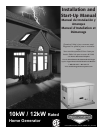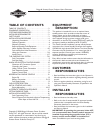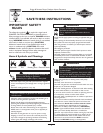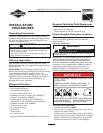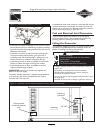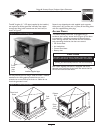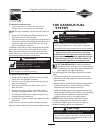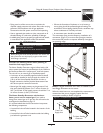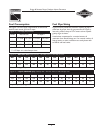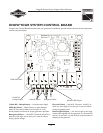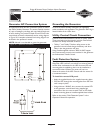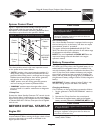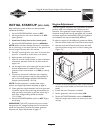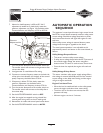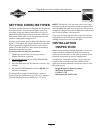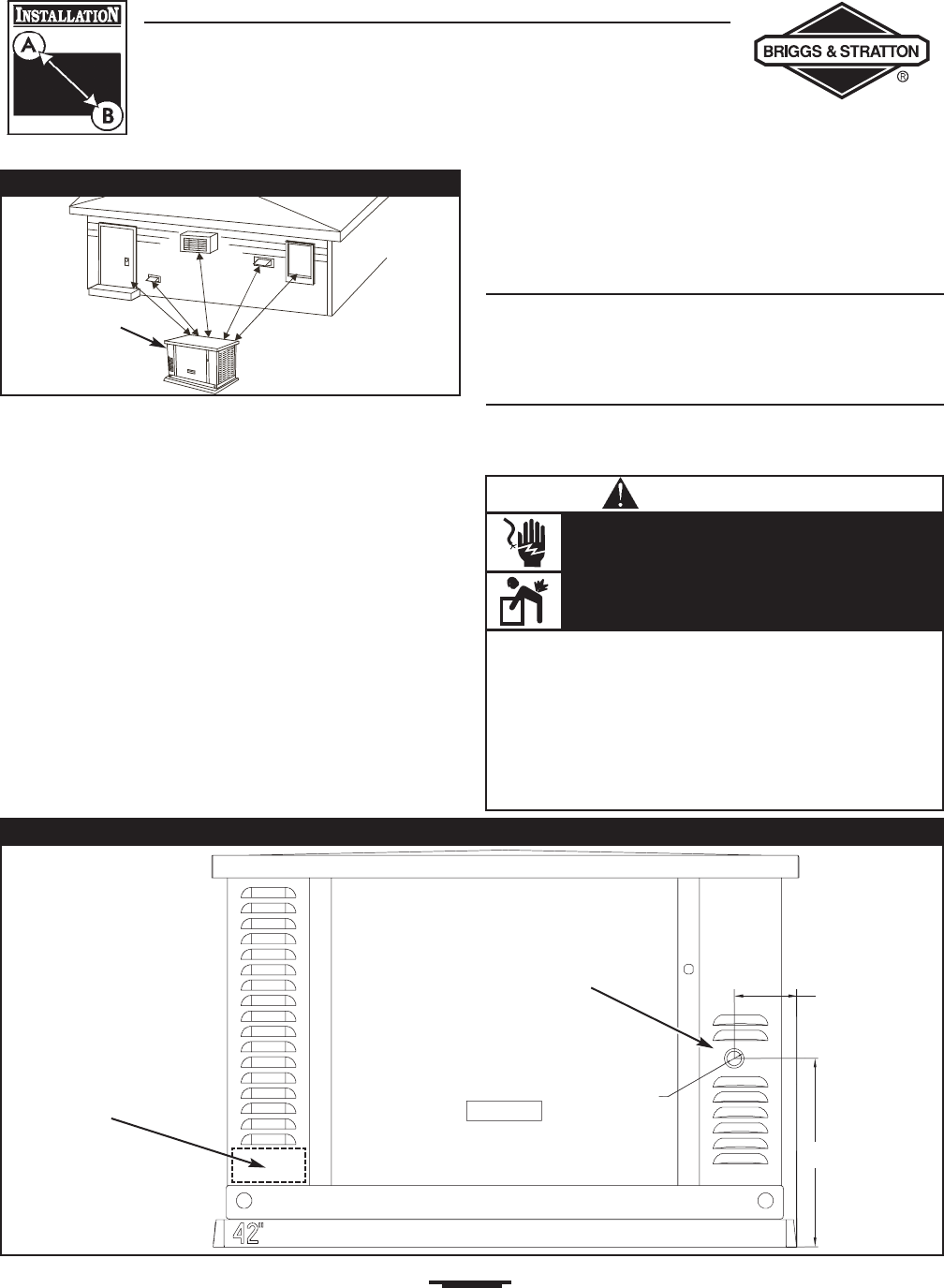
5
Briggs & Stratton Power Products Home Generator
Installation Manual
• Install the unit where the location of any services such as
phone, electrical, fuel, air conditioning, irrigation, including
covered, concealed and underground services will not be
affected or obstructed.
• Install the unit where air inlet and outlet openings will
not become obstructed by leaves, grass, snow, etc. If
prevailing winds will cause blowing or drifting, you may
need to construct a windbreak to protect the unit.
• Install the generator as close as possible to the Transfer
Switch to reduce the length of wiring and conduit.
• Install the generator as close as possible to the fuel
supply to reduce length of pipes.
IMPORTANT: Laws or local codes may regulate the
distance to the fuel supply.
The Home Standby Generator is shipped already attached
to its mounting pad. Unless mandated by local code, a
concrete slab is not required.
If mandated by local code, construct a concrete slab at least
3 inches thick and 6 inches longer and wider than the unit.
Attach unit to slab with 1/4” diameter (minimum) masonry
anchor bolts long enough to retain the unit.
Fuel and Electrical Inlet Dimensions
Figure 2, below, depicts the location of the fuel piping
connector.Also shown is the recommended location for
punching holes for attaching the power conduit.
Lifting the Generator
The generator weighs more than 375 pounds. Proper tools,
equipment and qualified personnel should be used in all
phases of handling and moving the generator.
Figure 2 — Generator Fuel and Conduit Attachment Locations, Oil Service Side of Unit
3/4” NPT
Fuel Piping
Connector
Recommended
Conduit Attachment
Area
4.5”
13.5”
Figure 1 — Home Standby Generator Clearances
Exhaust
Port
• If lifting or hoisting equipment is used, DO NOT contact any
power lines.
• DO NOT lift or move generator without assistance.
• Use lifting pipes as described in the section “Lifting the
Generator” in installation manual.
• The unit may shift on the lifting pipes during movement, which
can cause injury.
• DO NOT lift unit by roof as damage to generator will occur.
Hazardous Voltage
Contact with power lines can cause electric
shock or burn.
Lifting Hazard / Heavy Object
Can cause muscle strain or back injury.
WARNING



